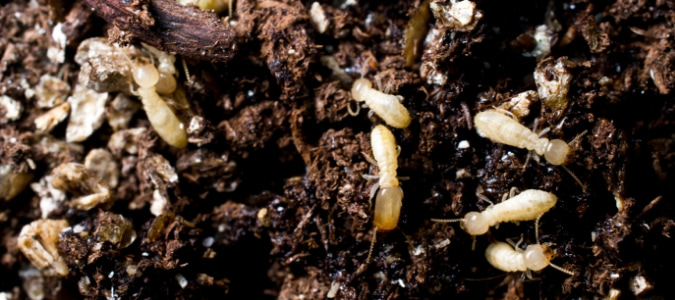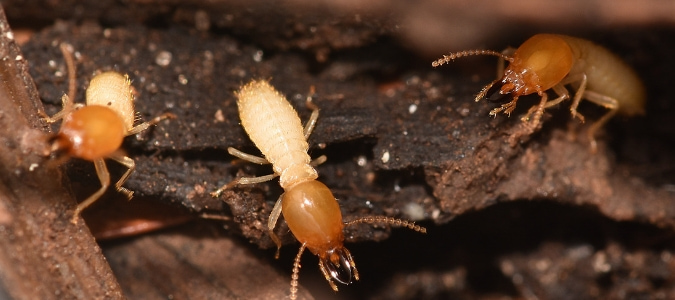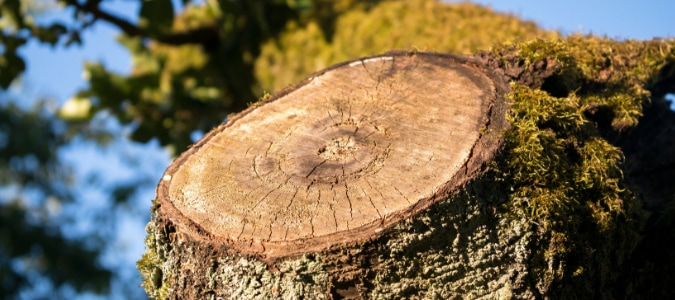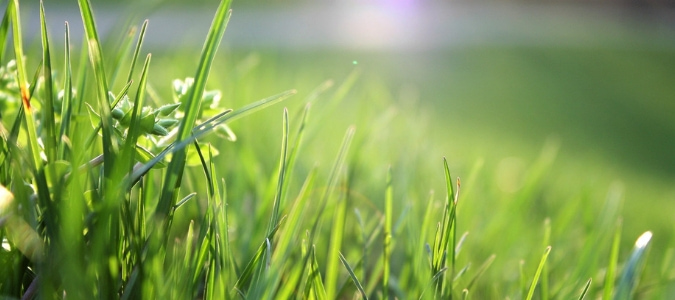Signs Of Termites In Yard: What Should You Do?

- If there are termites in your yard, does that mean these pests already in your house?
- If termites are in your yard, is that really a reason to be worried?
- What signs should you look for to determine how bad the problem is?
Pest professionals have heard all these questions—and countless others like them—many times over. We understand that finding termites outside is something that leaves homeowners wondering what they should do next.
If termites were clearly in the house, you would know that you need to handle it immediately. But in the yard? How does that change things?
We created this post to answer these kinds of questions.
First, let’s go over how to tell if you’re dealing with termites outside or not.
Identifying Termites In Grass
Every year, during the warm, humid months, some of the reproductive male and female termites leave the nest and fly out of the colony. Consequently, the most visible sign of a termite infestation is a swarm of flying termites.
However, there’s also a decent chance that the swarming insects you think are termites are in fact ants. So, how does one tell a termite from an ant?
Characteristics Of Termites
Termites are insects that are visible to naked human eye. You do not necessarily need to take a magnifying glass out to the yard for you to identify termites and tell them apart from their look-alikes.
One important fact to note is that the most destructive termites live underground, so unless you are disturbing soil, moving landscaping timbers or near a woodpile, you are unlikely to see these creatures out in the open.
That said, let’s go into a bit more detail about what termites look like.
Size
How big are termites, exactly? If you are trying to tell if what you are looking at is, in fact, a termite, you should know that:
- Termites are small to medium-sized.
- The body length ranges from between a quarter and a half inch.
Color
Are termites white, black, brown or another color entirely? Use these tips to learn more about this insect’s appearance:
- Termites range in color from light brown to white, depending on the type and life stage.
- Worker termites are often lighter than their darker swarming counterparts.
Body
What other information can help you tell if it’s a termite you see in your yard? The following information can be helpful for reference:
- Termites have a soft, pale, elongated body.
- A termite’s body has a head, thorax and abdomen.
- Termites have a pair of antennae that are just about as long as their heads.
- The maxillae (mouthparts) are also found on the head.
- A termite’s thorax is divided into three segments, and each segment has a pair of legs, giving them six legs total.
- Wings are found only on the thorax of reproductive male and female termites (swarming termites).
Is It A Termite Or An Ant?
Many homeowners mistake winged termites for winged ants—and vice versa. Even though it might be difficult to tell at first glance, there are many differences between ants and termites.
So, how are winged termites and ants distinct?
- Winged termites have equal length wings, straight antennae and a straight waist.
- Flying ants have wings that are different sizes, bent antennae and a pinched waist.
- The wings of winged termites are clear, while those of flying ants are often brown-tinted.
- Ants go through a complete metamorphosis, with four stages of development. Adult ants lay eggs that hatch into larva. The larva becomes a pupa, which later turns into an adult ant.
- Termites undergo incomplete metamorphosis with only three stages of development. Adult termites lay eggs that hatch into nymphs, and the nymphs later grow into adult termites.
- A male ant dies after mating with the female.
- Both the male and female termites live on after mating.
Different Types Of Termites
Over 3,000 species of termites that have been described to date. However, only less than 20 of them are recognized as pests in North America. Some of the termite species that U.S. homeowners typically have to deal with include:
- Subterranean termites (family Rhinotermitidae) are found all over the country, and are by far the most destructive termite species. An invasive, aggressive species, Formosan termites (C. formosanus) are sometimes called “super termites” because they are among the most voracious pests, capable of chewing through flooring, wood and even materials like wallapaper.
- Dampwood termites (family Hodotermitidae), which are the largest in size when compared to other types of termites, are found in the Pacific coastal states, desert environments in the semi-arid Southwest and southern parts of Florida. As their name indicates, dampwood termites live in areas of high moisture, which is why they are less likely to be problematic for homeowners.
- Drywood termites (family Kalotermitidae) can be found along the western coast of California and from Texas to coastal South Carolina and pose a threat to the wood in attic framing, floors and walls, furniture and other household items.
Termites In Garden: Do You Need To Worry?
It’s not unusual for southern homeowners to find termites in their yard or garden while digging or planting. On rare occasions, you might even catch these insects above ground foraging at night. Termites have been known to collect grass pieces from your lawn to carry back to their nest.
Termites serve an important role in our larger ecosystem. These creatures are recyclers and decomposers of dead wood, which helps maintain an essential balance among the living organisms that make up our backyards.
However, when they nest close to residential or commercial property, termites become a dangerous economic pest.
You may have some knowledge of the destructive power of termites. You may have heard that they cause billions of dollars of damage to structures every year. You may have also read about how thoroughly they can destroy a house. An experienced pest professional will tell you they can feast on your home without you even knowing it. Termites have earned the nickname “silent destroyers” for this ability to threaten a homeowner’s largest investment.
So, if you spot a termite in your yard or garden, is it really a big deal?
On the one hand, no. Termites naturally feed on various types of plant material, which may include bark, leaves, humus, wood and even the droppings of herbivores. However, once they’ve exhausted the food resources near their colony, termites will move on, and could begin feeding on the wood found on whatever structures they encounter.
Basically, their quest for food may bring termites to your house. If they find wood to feed on there (which they will), termites will build mud tubes leading from their colony to your home.
What happens when this occurs?
- They may cause structural damage—especially if your house is primarily built of wood.
- Even if the structure does not have a wood exterior, termites may cause structural damage by damaging walls, foundations and more.
- Termites could get into your home and feed on furniture, ceilings, floors and cabinets.
- Termites can damage other cellulose-based materials, such as carpets, books, clothes and photo frames.
- Since termites feed 24/7, the damage they cause may progress quickly if the right countermeasures aren’t put in place.
Warning Signs Of A Termite Infestation
There are a few tell-tale indicators of a termite infestation.
Mud Tubes
As mentioned earlier, termites will build small mud tunnels using soil or dirt. Termite mud tubes look like dirt that’s been packed into strands. These passageways can be seen coming up from the ground against the wall of a house and can be found virtually anywhere, including such places as the back patio, front porch, inside the garage or even on the wooden handles of a wide variety of home and gardening tools.
Sighting Of Flying Termites
Flying termites (also known as swarmers or alates) are one of the most obvious signs of termites in your yard.
Another sign of termites is the remnants of the wings that are discarded after the swarmers land. The wings are usually identical in shape, size and color, and can be found on the ground, floors or even along windowsills.
Holes In Wood
Termites bore into wood and consume it from the inside out. Therefore, wood that’s been damaged by termites will often have multiple tiny holes that were drilled by the termites.
Once inside the wood, termites create tunnels—also referred to as galleries. These galleries can be seen on the inside of split wood that’s been damaged by termites and can sometimes even be seen along the exterior.
As the termites consume the wood from the inside, they leave a thin veneer of timber or overlying paint. If you were to tap on wood that’s been impacted, it would feel papery and sound hollow if you were to tap it with a flat-head screwdriver.
Termite Droppings
After consuming wood, termites (particularly the drywood variety) leave behind grainy, brown-colored fecal mounds that are often confused with sawdust. These termite droppings, also referred to as frass, are frequently found beneath termite-infested wood.
Hard-To-Open Doors And Windows
The excrement and mud created by termites as they devour wood may trap moisture and heat, which can, in some extreme cases, make the wood itself swell. Doors and windows whose timber is swollen may become so tight-fitting that it becomes hard to open and close them.
How To Look For Termites
Now that we know what signs to look for, it’s time to learn how to try to perform your own visual inspection. Here’s what we’d recommend you try to determine whether you have a termite problem:
- Begin by taking a tour in and around the property, looking for possible entry points.
- Watch out for mud tubes, dirt or mud protruding from cracks.
- Break any tubes that you might see and check whether any termites are crawling inside.
- Check on the broken tubes a few days later to see if they’ve been rebuilt or whether new tubes arise.
- Watch out for piles of termite wings or actual live termites in and around the home.
Common termite locations in a home include:
- Window sills and doors
- Cellar and crawlspace doors
- Foundation walls
- Basements
- Subfloors
- Headers and joists
- Chimney bases
- Floor drains
- Washer/dryer areas
- Water heater
- Dirt-filled porches
- Planter boxes
- Wood decks
- Exterior sidings
Although you may find some types of termites in these areas, subterranean termites are notoriously hard to spot, particularly since they infest the most hard-to-reach areas of your home. The best way to find out if you have termites in and around your home, particularly given the high stakes if you have an infestation, is to have a trained pest professional conduct an inspection for you.
How To Get Rid Of Termites In A Tree Stump
One of the ways a termite colony can gain a foothold on your property is by feeding on a tree stump. Homeowners may notice these voracious pests set up camp in these areas and devour all they can, then move on to whatever structure is closest—quite possibly, your house.
If you discover termites on a tree stump in your yard, your natural instinct will be to forcibly evict these dangerous pests. But, how?
Clear The Area
Remove loose sections of the stump and other wood debris nearby and put these materials in your City of Austin green composting cart or in a bag for your residential yard trimming collection.
Apply A Termiticide
Call in a professional to treat the impacted area. Although consumers may purchase and use these products, the Environmental Protection Agency and other institutions recommend having a trained pest management technician apply termiticides on your property.
Treat The Surrounding Soil
An experienced pest control professional may also recommend treating around the stump to target the termites that may be living underground nearby.
Remove The Stump
The most effective way to eliminate termites on a tree stump is to remove the food source, which is the stump itself. However, stump removal is expensive, so most homeowners only take this step in extreme cases.
Do Termites Come Back After Treatment?
Unfortunately, the soil in Texas and many other southern states is quite comfy for termites, so they’re going to try to come back. The factors that dictate how long termite treatment products will last include which type of treatment was used, how thorough the application was, what part of the country you live in, any unique aspects of your local environment that make you more or less susceptible to termites and how severe your infestation was. Generally speaking, recurrences occur when termites find a gap in the chemical barrier that products are intended to form around your home, rather than from a product breaking down over time.
Chem-free Can Protect Your Home From Termites
Want some good news? Chem-free uses scientifically-proven products to safeguard your home from these destructive pests. The compound treatment we use stays in the ground for five years, encouraging these pests to stay away. As an added line of defense, we can also install sensors in your yard that will detect when termites are getting too close. With the help of Chem-free, your biggest investment can be safeguarded from termite infestations while you can rest assured that the methods we employ will be low-impact on your children, your pets and the nearby flora and fauna. Contact us today for a free estimate!
Need Help Managing Pests?
Chem-Free offers both effective, low-impact pest control options and preventative measures to help avoid future infestations. Contact us today for a free estimate!






